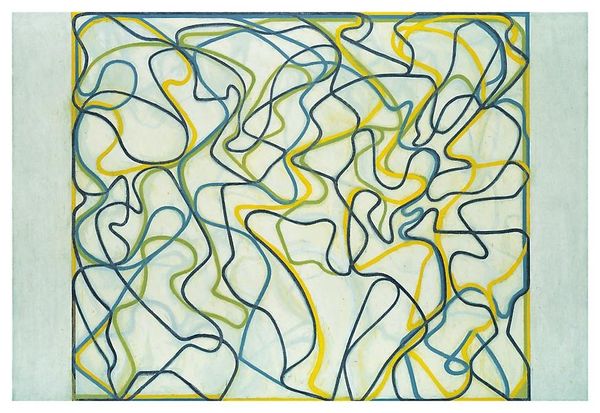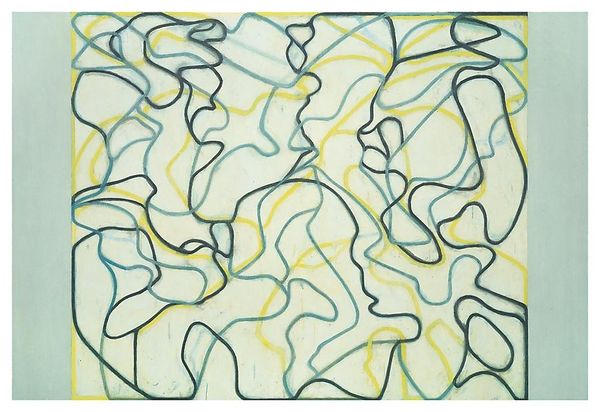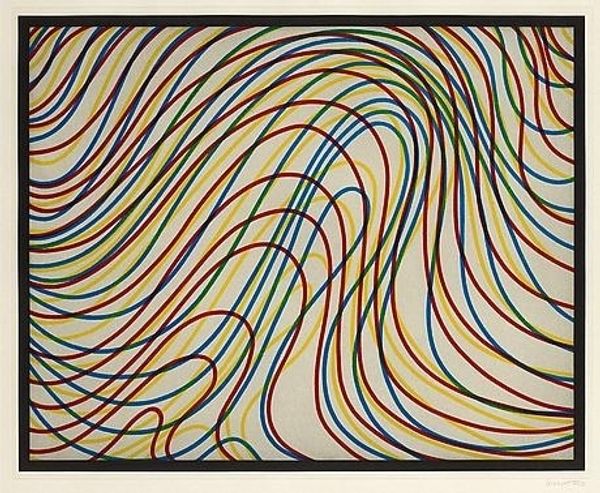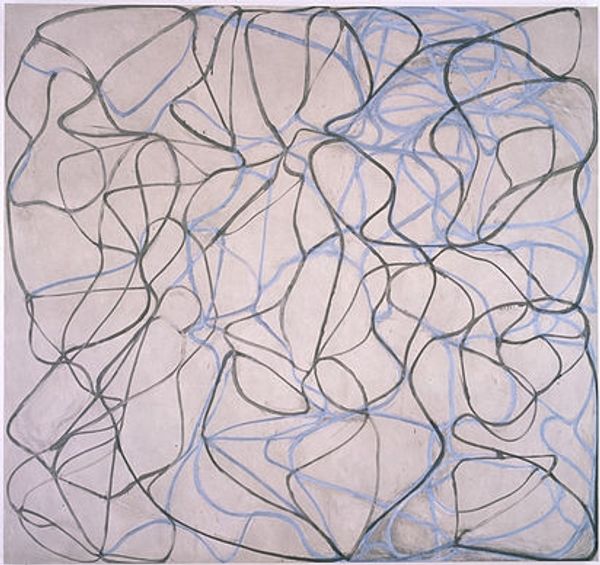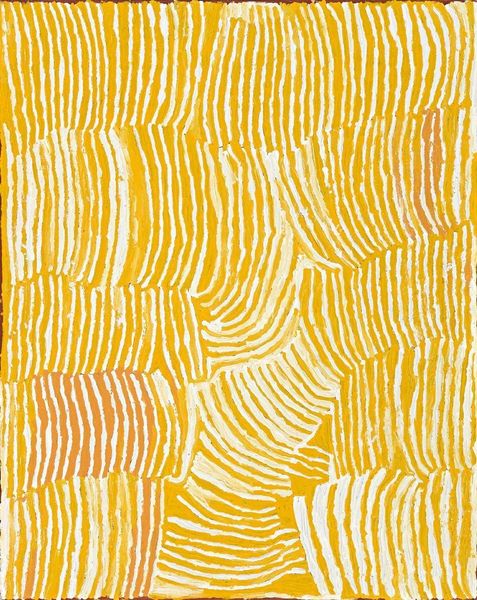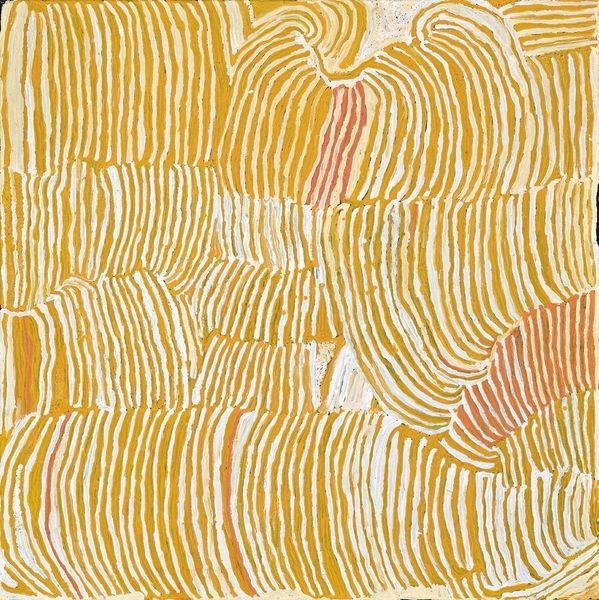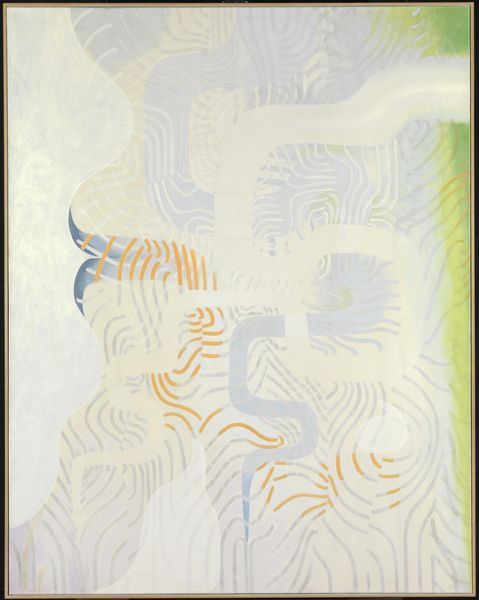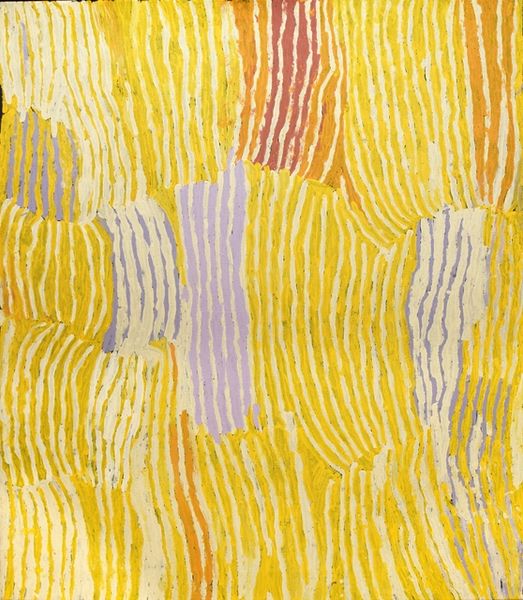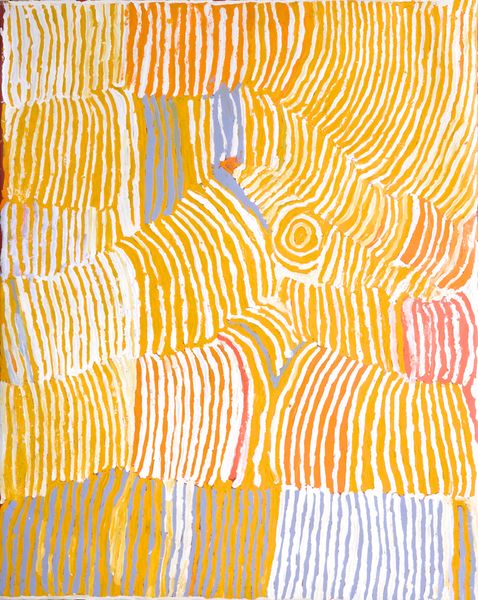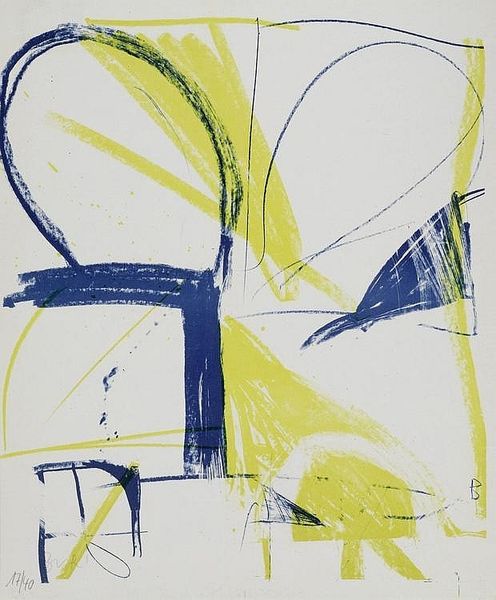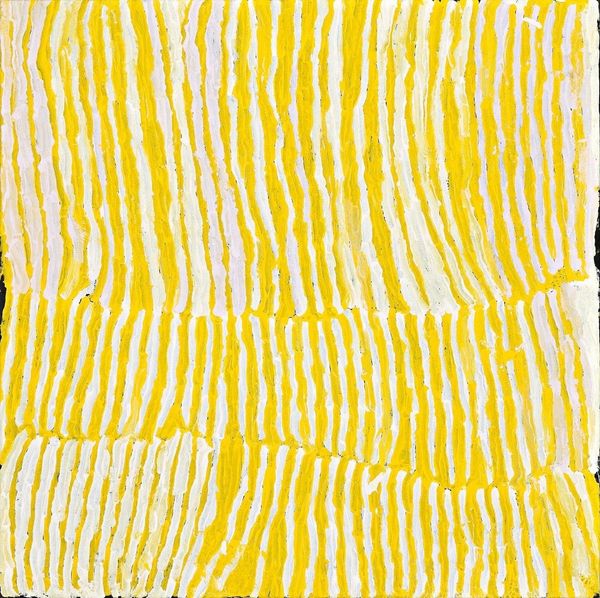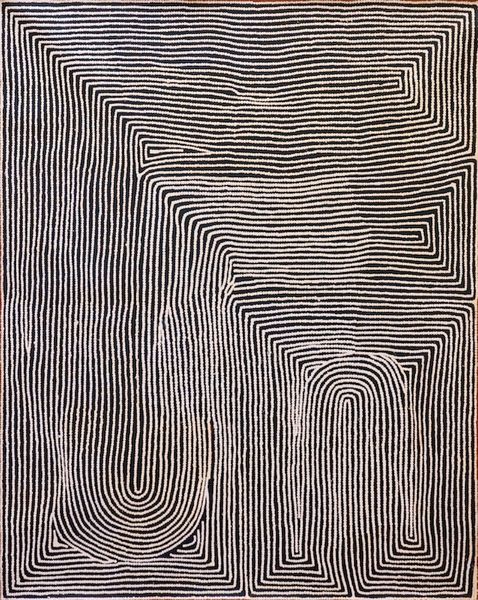
Dimensions: support: 1524 x 914 mm
Copyright: © The estate of Kenneth Martin | CC-BY-NC-ND 4.0 DEED, Photo: Tate
Curator: Here we have Kenneth Martin’s “Seventeen Lines” from the Tate Collections. Editor: It strikes me as a fascinating dance of colors amidst the stark white background. The meandering lines create an unexpected sense of depth. Curator: Martin’s geometric abstract work pushes against the dominant trends of the mid-20th century art world, embracing system and chance. It's a clear rejection of the more expressive modes of abstract painting. Editor: Indeed, the color palette, although restrained, works harmoniously. Notice how the lines, while appearing random, are carefully orchestrated to guide the viewer's eye. Curator: Martin's work also highlights the growing importance of mathematical and structural principles, signaling a shift away from traditional, humanistic values. Editor: It's true; the painting offers a quiet challenge to conventional aesthetic preferences. Looking closely, the subtle variations in line thickness and color create a quiet tension within this minimal composition. Curator: Its placement within the museum underscores how abstraction became institutionalized, moving from avant-garde to an accepted, even celebrated, artistic language. Editor: Perhaps that institutional embrace provided a needed platform for artists exploring new visual languages. Curator: Ultimately, the painting makes me consider the evolving role of art in shaping cultural understanding. Editor: Agreed, a simple yet remarkably complex piece.
Comments
Join the conversation
Join millions of artists and users on Artera today and experience the ultimate creative platform.
tate 6 months ago
⋮
Kenneth Martin made his first abstract paintings in the late 1940s and his first constructions in the early 1950s. The lines, painted in several different colours, do not overlap. While painting Martin gave the colours added attributes, with blues pushing one way and yellows the opposite, while black and green (a combination of blue and yellow) remained relatively still. The identity of each line is determined by the number of times it moves forwards or backwards across the canvas. Martin wrote that his interest in kinetics led to the changes in direction in the line. He suggested that a basis for this and all related constructions was his interest in change in movement. Gallery label, September 2004
